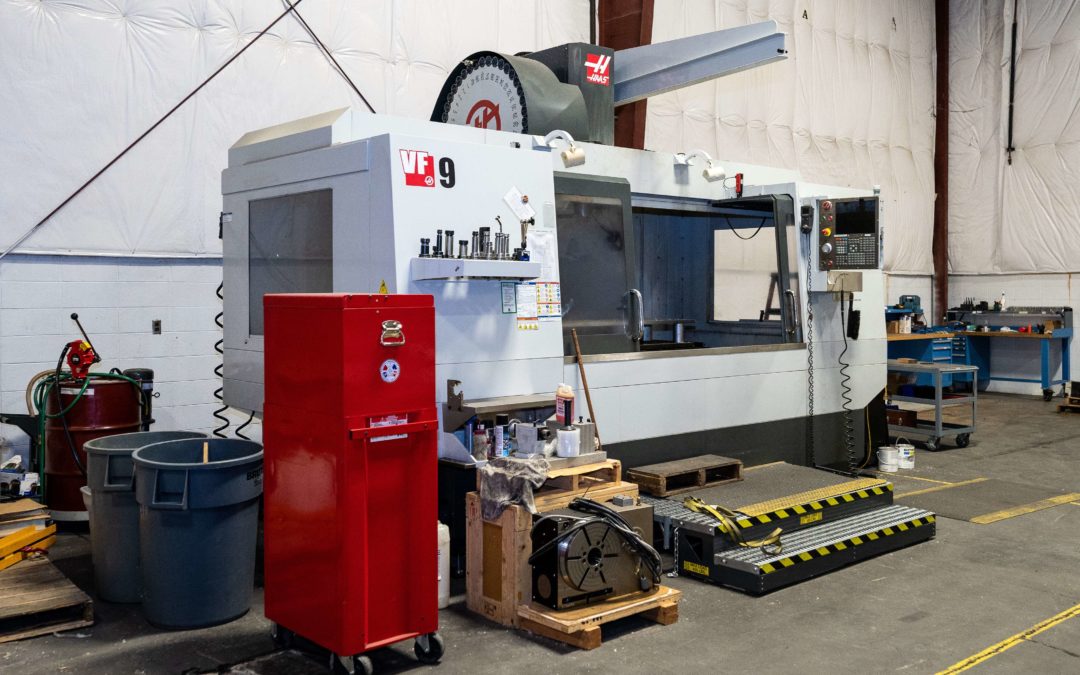As business slows down for the colder months, some of your heavy equipment may likely go unused for a little while. If you won’t be using your equipment for months—or even years—you should properly store it to protect your industrial equipment from damage while it sits unused. Before storing equipment, though, there are some steps you should take to preserve its condition and extend its life so that it can continue to be used when it comes out of storage.
Tip #1: Clean Equipment Before Storage
You’re likely already aware of the toll dirt and debris can have on heavy equipment. When foreign particles get into moving parts, they cause excess friction that can prematurely wear down those parts. Dirt, salt, and other substances can also eat away at paint and protective coatings, which can lead to rust and other damage. If debris gets into fluid lines or sensitive parts, it will form blockages that can solidify and worsen the longer the equipment sits. If you try to use the equipment after storage and it has blockages, it might not work properly or even turn on at all. It is always best to thoroughly clean your industrial equipment before storing it to avoid any of these problems.
Tip #2: Use Lock-Out/Tag-Out Protocols
Industrial equipment can be dangerous. To avoid the accidental startup up equipment while it’s in storage, consider using lock-out/tag-out protocols. Tag-out devices warn employees to refrain from turning the machine on, while lock-out devices prevent the machine from being switched on without some sort of unlocking mechanism. These safety practices protect employees from being harmed by the equipment while it is in storage and protect the machine from unauthorized and potentially harmful use.
Tip #3: Add Air to Tires
If you are storing equipment that has tires, you should add air so that the tires are just slightly overinflated. This will keep the tires from getting flat during long periods of equipment storage, which is likely to happen if they will be sitting on a concrete floor like that in a warehouse. If you don’t want to overinflate the tires, there are other options to avoid flat spots during storage. For example, you can store your heavy equipment lifted off the ground to keep the weight off the tires.
Tip #4: Lubricate Moving Parts
Before putting your industrial equipment in storage, clean and lubricate the moving parts. Check with the owner’s manual and follow its suggestions for lubrication. Lubricating points of contact between moving parts prior to equipment storage will allow the equipment to be able to start and work properly without excess friction when it’s time to use it once again.
Tip #5: Repair Any Damage
It’s common for heavy equipment to sustain damage over the course of its use. If the damage has only been minor and has not affected the equipment’s ability to function, then it’s probably been easy to overlook the issue without fixing it. However, minor damage can cause major problems if left unattended while the equipment sits in storage for a length of time. Areas where paint has been scratched off can become subject to rust, and other minor problems can degrade over time, shortening the life and usability of the equipment. Paint over chipped or scratched areas to protect the equipment from rust and fix any other minor repairs that could cause damage if left untouched for the duration of storage.
Tip #6: Check the Fuel Levels
If you are storing equipment that has a fuel tank, check its fuel levels before storage. When storing industrial equipment during cold months, top off the fuel tank so that no condensation will form, as condensation can contaminate the fuel lines. For spring storage, drain the fuel from the tank to prevent the accumulation of gum deposits and rust.
Tip #7: Perform Maintenance
Industrial equipment needs to be properly maintained to stay operational. Check the owner’s manual to see what kind of maintenance is needed and how often. It is always a good idea to perform any necessary maintenance prior to equipment storage so that the machine will be ready to use as soon as it is recommissioned.
Tip #8: Keep Accessibility in Mind
Whether you are storing equipment onsite or at an equipment storage facility, you should position it so that the equipment will be easily accessible. If the equipment will be in storage for years, it will need to be fired up at least once each year for maintenance and checks, so make sure it is positioned in a way that will allow this. Make sure identification numbers are visible for inventory purposes as well. It is also important to keep enough space between machinery in storage to prevent collisions when moving equipment in and out.
Warehousing and Equipment Storage in Knoxville, TN
These tips aren’t the only things you need to do to protect your industrial equipment when it won’t be used for a while. You also need to choose a secure, weather-proof equipment storage location that will keep your machinery safe. Rowe Transfer has 50,000 square feet of secure, climate-controlled warehouse storage space with 24/7 security monitoring, video surveillance, RFID access control, and humidity control. Whether you need short-term or long-term equipment storage, Rowe Transfer can meet your storage needs and give you peace of mind that your equipment will remain safe and sound. To find out more about our warehouse storage abilities, reach out us today at 865-523-0421 or online.
Need assistance getting your heavy equipment to our warehouse? We can handle that, too. Rowe Transfer offers rigging and transportation services to help you move even the most cumbersome equipment wherever it needs to go. Contact our team to find out how Rowe Transfer can meet your rigging, storage, and transportation needs.

